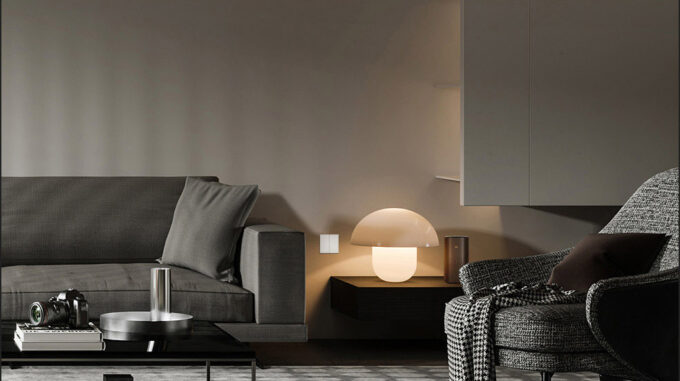Never Put These Plants in Your Bedroom! (And Here’s Why)

Creating Your Perfect Sleep Sanctuary: Smart Plant Choices for the Bedroom
While plants enhance our living spaces, not every variety belongs in your sleep environment. Understanding which plants support – and which might hinder – restful sleep can transform your bedroom into a true sanctuary. Let’s explore how to curate plant life that aligns with quality rest and peaceful energy.
Understanding Plant Impact on Sleep Quality
Nighttime Chemical Changes:
Plants undergo different processes after dark. Some varieties increase their CO₂ output at night, potentially affecting your bedroom’s air composition. Others release compounds that might trigger sensitivities or disrupt sleep patterns.
Scent Considerations:
Though subtle plant fragrances can soothe, intense botanical aromas might overstimulate your senses when you’re trying to wind down.
Energy Flow Effects:
Your bedroom’s arrangement influences its restorative potential. Oversized plants or poor positioning can create stagnant spots, disrupting the room’s natural energy circulation.
Spotting Sleep-Disrupting Plants

Watch for these characteristics when selecting bedroom greenery:
Nighttime Respiration:
Light-loving plants and certain succulent varieties often release higher CO₂ levels after dark. While this process is natural, it might not serve your sleep environment.
Aroma Intensity:
Plants with persistent, strong scents can overwhelm a sleep space. Consider moving aromatic varieties to living areas where their fragrances can be better appreciated.
Natural Compound Production:
Look out for plants with resinous leaves or distinctive chemical scents – these might release substances best kept away from your sleep zone.
Key Elements for Restorative Sleep Spaces
Space Organization:
Maintain open pathways and clear surfaces to support natural energy movement.
Material Selection:
Incorporate natural textures and subdued tones that promote relaxation.
Symbolic Elements:
Choose décor that reinforces tranquility without overwhelming the space.
Strategic Plant Placement:
Select smaller, air-purifying varieties that complement rather than dominate your bedroom.
Creating Your Optimal Plant Arrangement
Phase 1: Evaluate Current Plants
Document Existing Greenery:
Survey your bedroom’s plants and research their nighttime behaviors and scent profiles.
Note Potential Issues:
Identify any plants known to affect air quality or produce strong aromas after dark.
Adjust Accordingly:
Relocate plants that might compromise sleep quality to other rooms where their properties are beneficial.
Smart Move:
Create a reference guide of bedroom-friendly plants for future decisions.
Phase 2: Select Supportive Species
Choose Wisely:
Focus on plants known for air purification without strong scents. Snake plants and peace lilies often work well in sleep spaces.
Consider Scale:
Select plants that maintain proportion with your room size and furniture arrangement.
Position Thoughtfully:
Place plants where they enhance both aesthetics and air flow without creating obstacles.
Smart Move:
Establish a designated plant area that combines visual appeal with practical placement.
Phase 3: Maintain Optimal Conditions
Regular Assessment:
Monthly evaluations help ensure your plant arrangement continues serving your sleep environment.

Adapt to Seasons:
Modify plant care and positioning as natural light and temperature patterns shift.
Monitor Sleep Quality:
Pay attention to how changes in your plant arrangement affect your rest.
Smart Move:
Schedule seasonal reviews of your bedroom’s plant setup to maintain ideal conditions.
Additional Sleep Environment Enhancements
Natural Scent Integration:
Consider gentle essential oil diffusion for sleep support.
Light Management:
Balance natural daylight with soft evening illumination.
Simplified Space:
Maintain an uncluttered environment that promotes mental calm.
Air Quality:
Regular ventilation supports both plant health and sleep quality.
Coordinated Design:
Choose room elements that work together to create a peaceful atmosphere.
Closing Thoughts
Creating an optimal sleep environment requires thoughtful plant selection and placement. Focus on varieties that support air quality without disrupting sleep patterns. Regular monitoring and adjustment of your plant arrangement ensures your bedroom remains a true sanctuary for rest. By implementing these strategies, you’ll develop a sleep space that naturally promotes rejuvenation and well-being.
Latest Posts
How to Choose Curtains That Make Your Room Look Bigger
Experiencing confinement in your compact living quarters? Structural modifications aren’t necessary to...
3 Mins readLinptech Smart Switch T1 Zero: A Smarter, Sleeker Way to Control Your Home
Linptech Smart Switch T1 Zero: A Smarter, Sleeker Way to Control Your...
1 Mins readBeaverlab MX Pro Smart Microscope: A High-Tech Home Science Lab
Beaverlab MX Pro Smart Microscope: A High-Tech Home Science Lab Beaverlab has...
1 Mins readDIY Reed Diffuser: How to Make a Natural Home Fragrance
Transform your living space with subtle, lasting aromas using a handmade reed...
2 Mins read











